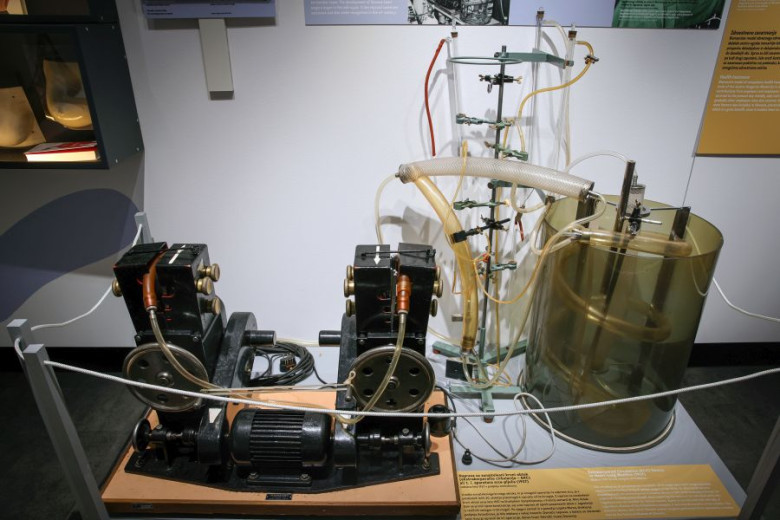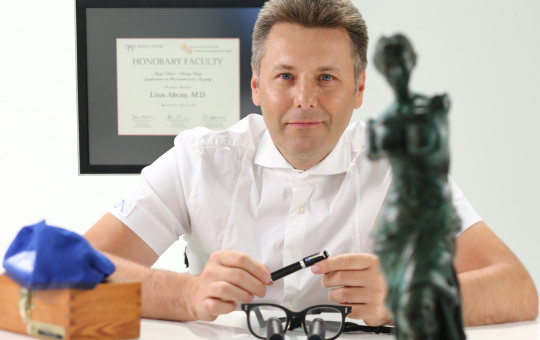Date: 21. August 2025
Time to read: 2 min
Over the past century, Slovenian healthcare and medicine have made remarkable progress – from the first half of the 20th century, when communicable diseases and a lack of healthcare services threatened the population, to the present day, when they can stand alongside the best in the world in many fields.
Like all modern healthcare systems, the Slovenian system faces numerous challenges, yet the perseverance, knowledge and dedication of healthcare professionals ensure patients receive high-quality care.
The first 20 community health centres
The Slovenian healthcare system has been based on the principle of public healthcare since its beginnings. After the First World War, a new public healthcare system was introduced in the Kingdom of Serbs, Croats and Slovenes, with hygiene institutes establishing new healthcare providers.
The first community health centre was built almost a hundred years ago – in 1926 in Lukovica near Domžale. The community of Lukovica often suffered from typhoid epidemics, partly due to poorly maintained septic tanks that contaminated the drinking water. The renovation of the settlement, the construction of a water supply and a sewage system, and the establishment of a community health centre brought the residents much-needed healthcare.
-
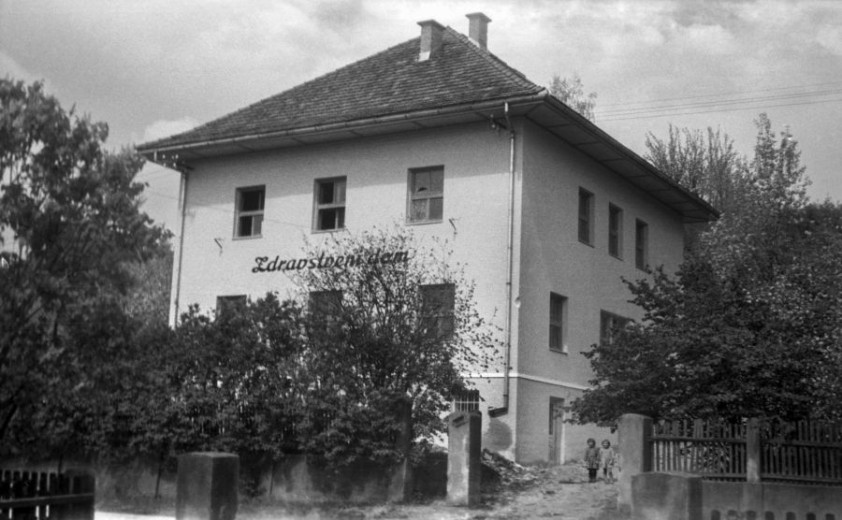 Lukovica Community Health Centre, Lukovica near Domžale. Photo: France Cerar, held by the National Museum of Contemporary History of Slovenia.
Lukovica Community Health Centre, Lukovica near Domžale. Photo: France Cerar, held by the National Museum of Contemporary History of Slovenia.
-
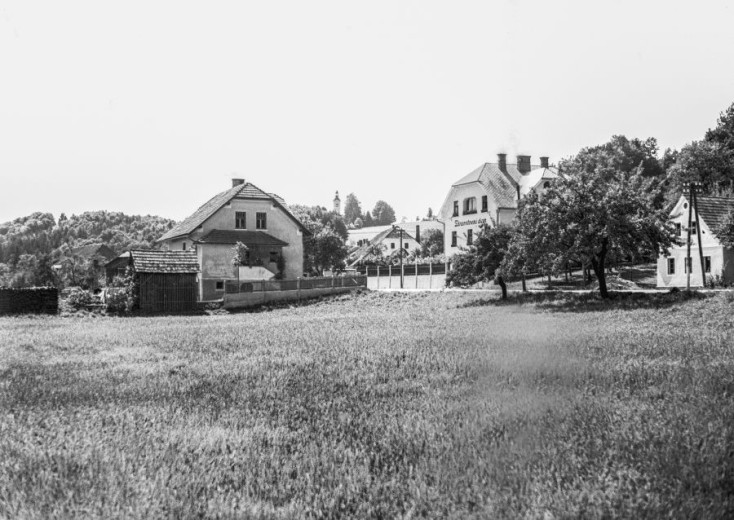 A view of Lukovica. On the right is the Lukovica Community Health Centre, and on the left is the house of photographer Cerar, Lukovica near Domžale. Photo: France Cerar, held by the National Museum of Contemporary History of Slovenia.
A view of Lukovica. On the right is the Lukovica Community Health Centre, and on the left is the house of photographer Cerar, Lukovica near Domžale. Photo: France Cerar, held by the National Museum of Contemporary History of Slovenia.
"Public healthcare in community health centres initially focused on vulnerable groups suffering from poor health in the aftermath of the First World War, namely infants, mothers and patients with social diseases such as tuberculosis and syphilis," explained Nataša Strlič, curator of the exhibition Health Is Our Greatest Wealth: Selected stories of Slovenian health and medical heritage since the beginning of the 20th century at the National Museum of Contemporary History of Slovenia. By the early 1940s, 20 community health centres were already operating across Slovenia.
In the Kingdom of Serbs, Croats and Slovenes, public healthcare was developed by dr. Andrija Štampar, and in Slovenia by brothers dr. Ivo Pirc and dr. Bojan Pirc, and dr. Amalija Šimec, one of the first female doctors and a Rockefeller Foundation scholar. All of them were advocates of healthcare as a public service, highlighting the importance of prevention.
7 million X-ray images
One of the largest public health campaigns in Slovenia took place between 1947 and 1982, when fluorography – chest X-ray screening – was used to detect tuberculosis and other diseases. "As not all inhabitants, especially farmers, had health insurance or access to X-ray imaging, mobile units with X-ray machines travelled to towns and villages across Slovenia," explained Nataša Strlič. During this period, more than 7 million fluorographic images were taken, leading to the detection of numerous cases of disease.
Medicine in wartime
The First and Second World Wars posed extraordinary challenges for Slovenian healthcare. During the Second World War, the partisans set up a system of hidden hospitals located in remote places. One of the most famous was the Franja Partisan Hospital, which the occupying forces never discovered.
"Doctors and other staff worked under extremely harsh conditions in these hospitals. In his memoires, dr. Janez Milčinski describes how they worked in poor lighting, with a shortage of supplies, and in cold, damp conditions," said Nataša Strlič about the situation at the time. She added that, through skill and improvisation, the partisan hospitals collectively treated more than 20,000 patients.
-
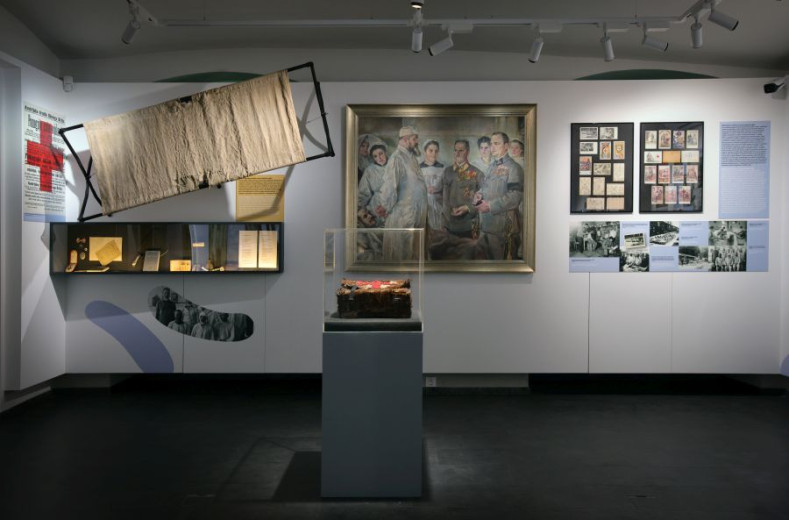 From the First World War, the exhibition features a more than one-hundred-year-old folding bed and a military leather bag for first aid supplies. Photo: The National Museum of Contemporary History of Slovenia.
From the First World War, the exhibition features a more than one-hundred-year-old folding bed and a military leather bag for first aid supplies. Photo: The National Museum of Contemporary History of Slovenia.
-
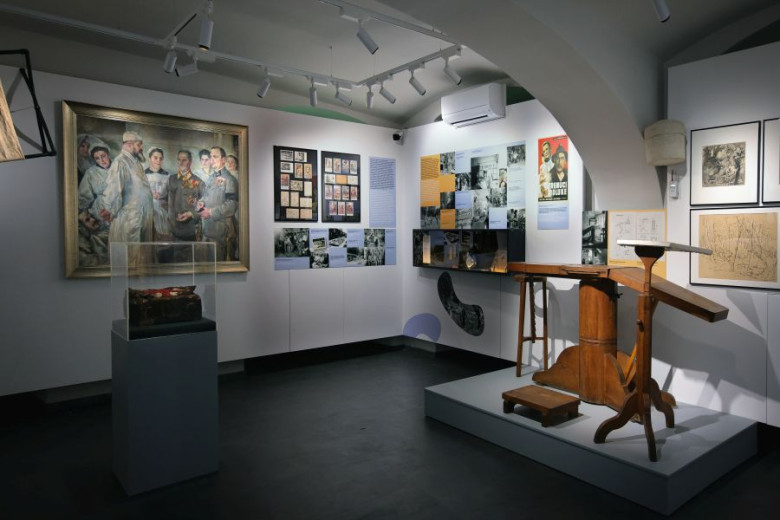 Dr. Janez Milčinski even designed a wooden operating table, which was built after his plans in Kočevski Rog, where a network of hidden partisan hospitals was located. Photo: The National Museum of Contemporary History of Slovenia.
Dr. Janez Milčinski even designed a wooden operating table, which was built after his plans in Kočevski Rog, where a network of hidden partisan hospitals was located. Photo: The National Museum of Contemporary History of Slovenia.
Role of nurses
Nursing has a long tradition in Slovenia. Traditionally, patients were cared for by women, primarily nuns from different religious orders. Since the mid-19th century, the most numerous – though not the only ones – were the Sisters of Mercy. They were an indispensable part of the healthcare workforce, nursing patients and also working in pharmacies, laboratories, laundries and elsewhere. Between the two world wars, nuns began to receive formal education. In 1948, they were required to put aside their religious habits, and as a result most left Slovenia.
-
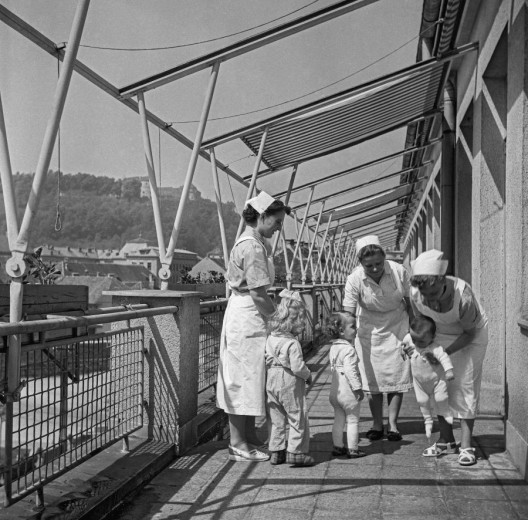 Nurses and young patients at the Paediatric Clinic at Vrazov trg in Ljubljana, 24 May 1955. Photo: Zvone Mahovič. Foto Slovenija collection, held by the National Museum of Contemporary History of Slovenia.
Nurses and young patients at the Paediatric Clinic at Vrazov trg in Ljubljana, 24 May 1955. Photo: Zvone Mahovič. Foto Slovenija collection, held by the National Museum of Contemporary History of Slovenia.
-
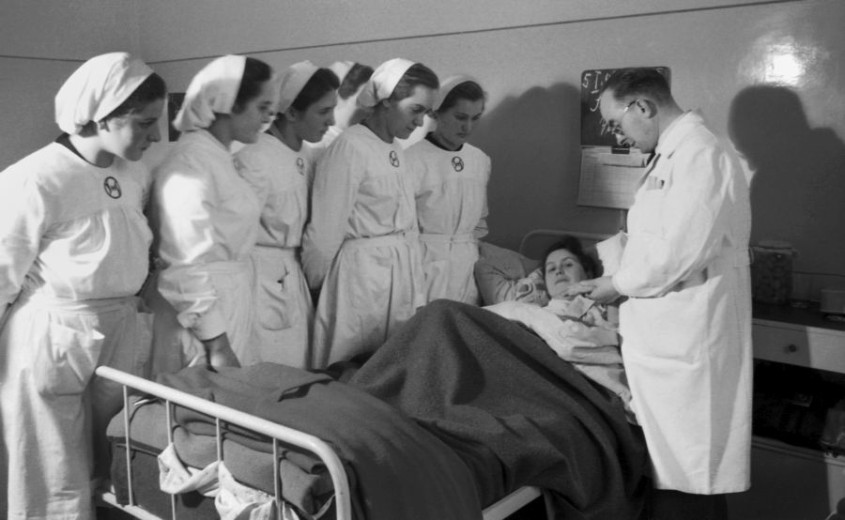 Practical training at the nursing school, Ljubljana, 26 January 1948. Photo: Leon Jere. Foto Slovenija collection, held by the National Museum of Contemporary History of Slovenia.
Practical training at the nursing school, Ljubljana, 26 January 1948. Photo: Leon Jere. Foto Slovenija collection, held by the National Museum of Contemporary History of Slovenia.
-
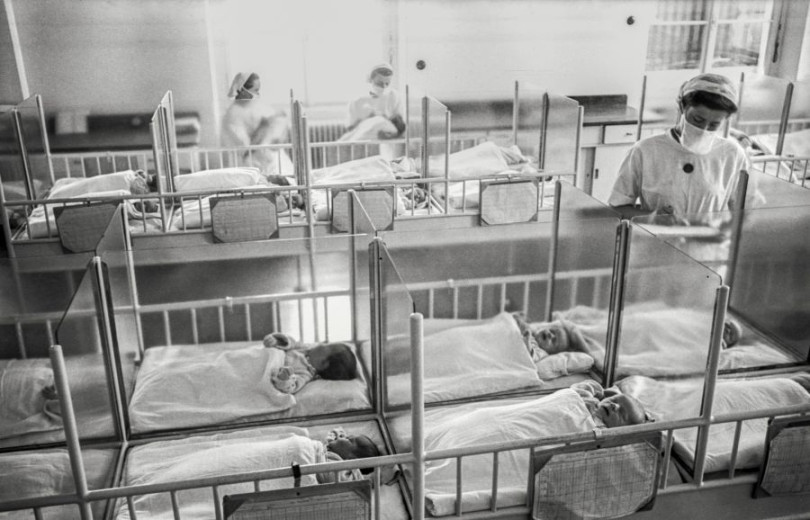 Newborns at the Ljubljana Maternity Hospital. They were placed in shared rooms known as "štacije", Ljubljana, 14 July 1950. Photo: Jože Mally. Foto Slovenija collection, held by the National Museum of Contemporary History of Slovenia.
Newborns at the Ljubljana Maternity Hospital. They were placed in shared rooms known as "štacije", Ljubljana, 14 July 1950. Photo: Jože Mally. Foto Slovenija collection, held by the National Museum of Contemporary History of Slovenia.
Civilian nurses had already begun training in the Kingdom of Serbs, Croats and Slovenes. After the Second World War, they started working in hospitals, taking on an important role in curative care. Today, nurses form the backbone of healthcare and are central to the daily care of patients.
Pioneers pushing boundaries
Although Slovenian experts often worked in conditions where the latest equipment was not available to them, this did not hold them back.
In 1958, dr. Miro Košak and professor Božidar Lavrič, along with their team, performed the first operation using a device for extracorporeal circulation. It was manufactured by the company Avtoobnova based on Košak’s design. "Dr. Košak saw such a device at a training course in France in 1957. As it was not possible to purchase one in Yugoslavia at the time, he designed it with the help of his friend, the director of Avtoobnova. The company then produced it within a few months based on his design," explained Nataša Strlič, providing historical context. The extracorporeal circulation device is crucial in heart surgery as it temporarily takes over the function of the heart and lungs.
In 1985, plastic surgeon dr. Marko Godina became the first in the world to perform an operation in which he first implanted a farmer’s hand, severed by a combine harvester, under the armpit to keep it viable. After 65 days, the hand was reattached to the stump, restoring its function.
-
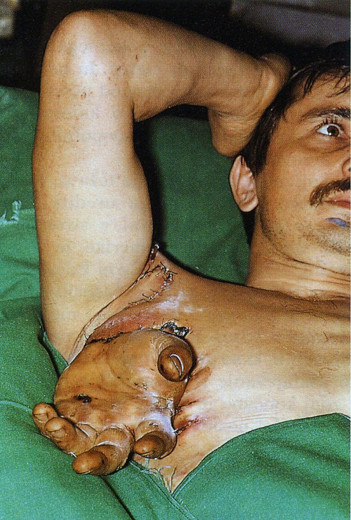 The first heterotopic transplantation, performed by Marko Godina and his team in 1985. A farmer’s hand, severed by a combine harvester, was first implanted under the armpit to keep it viable, and later reattached to the stump, restoring its function. Photo held by the Institute of History of Medicine.
The first heterotopic transplantation, performed by Marko Godina and his team in 1985. A farmer’s hand, severed by a combine harvester, was first implanted under the armpit to keep it viable, and later reattached to the stump, restoring its function. Photo held by the Institute of History of Medicine.
Slovenian healthcare has developed from small, often improvised beginnings into a system that today achieves world-class results, with its greatest strength lying in the knowledge, dedication and compassion of its workforce.
You can learn more about interesting and groundbreaking developments from the history of Slovenian healthcare and medicine in the 20th and 21st centuries at the exhibition Health Is Our Greatest Wealth at the National Museum of Contemporary History of Slovenia.
-
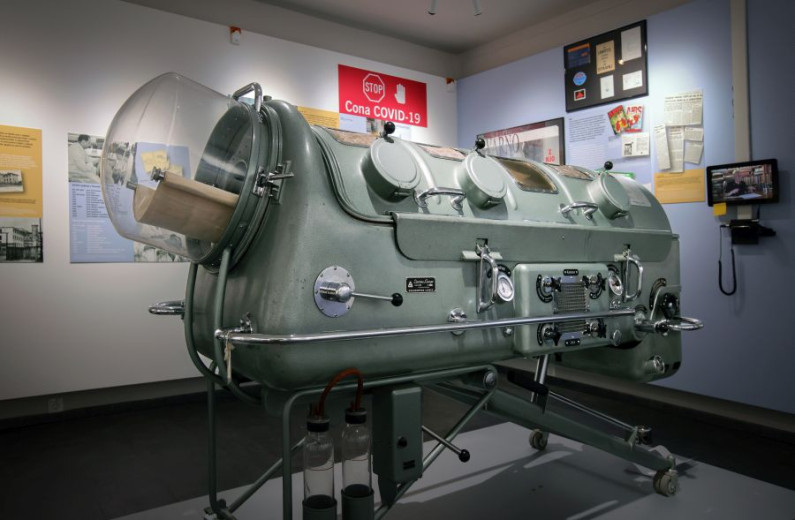 In the exhibition, you can also see up close the so-called iron lungs – large machine that used air pressure to help people breathe when their chest muscles were paralyzed by polio. Photo: The National Museum of Contemporary History of Slovenia.
In the exhibition, you can also see up close the so-called iron lungs – large machine that used air pressure to help people breathe when their chest muscles were paralyzed by polio. Photo: The National Museum of Contemporary History of Slovenia.
-
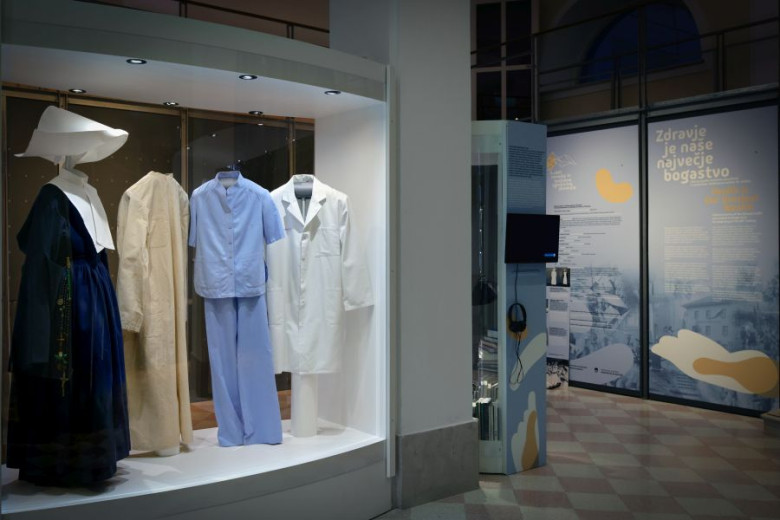 The exhibition showcases items from numerous Slovenian museums, healthcare and related institutions. It also highlights the work of the Institute of History of Medicine. Photo: The National Museum of Contemporary History of Slovenia.
The exhibition showcases items from numerous Slovenian museums, healthcare and related institutions. It also highlights the work of the Institute of History of Medicine. Photo: The National Museum of Contemporary History of Slovenia.
-
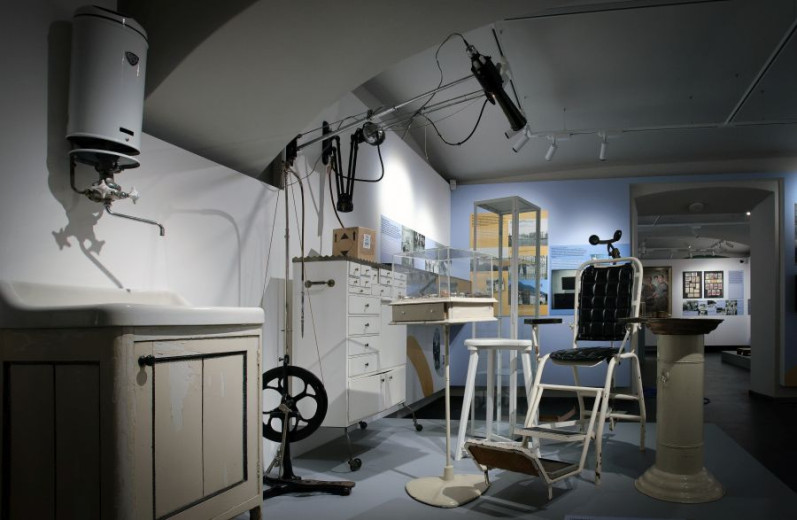 Part of the exhibition is also dedicated to the history of dentistry. In Slovenia, its organized public health beginnings date back to 1928, when the first school dental clinic was established in Celje as part of the school polyclinic. Photo: The National Museum of Contemporary History of Slovenia.
Part of the exhibition is also dedicated to the history of dentistry. In Slovenia, its organized public health beginnings date back to 1928, when the first school dental clinic was established in Celje as part of the school polyclinic. Photo: The National Museum of Contemporary History of Slovenia.

